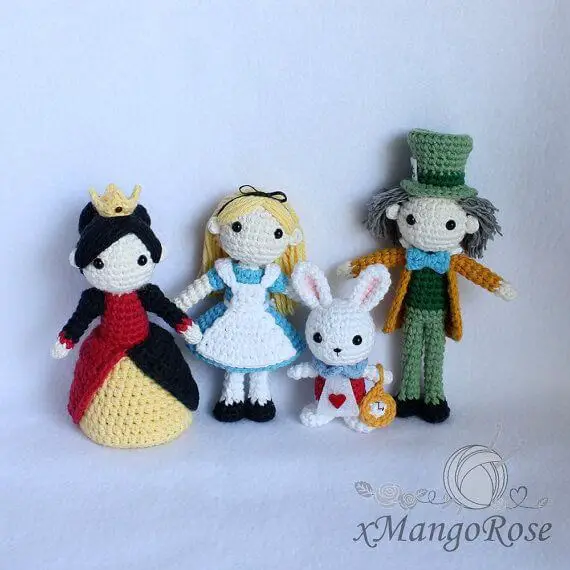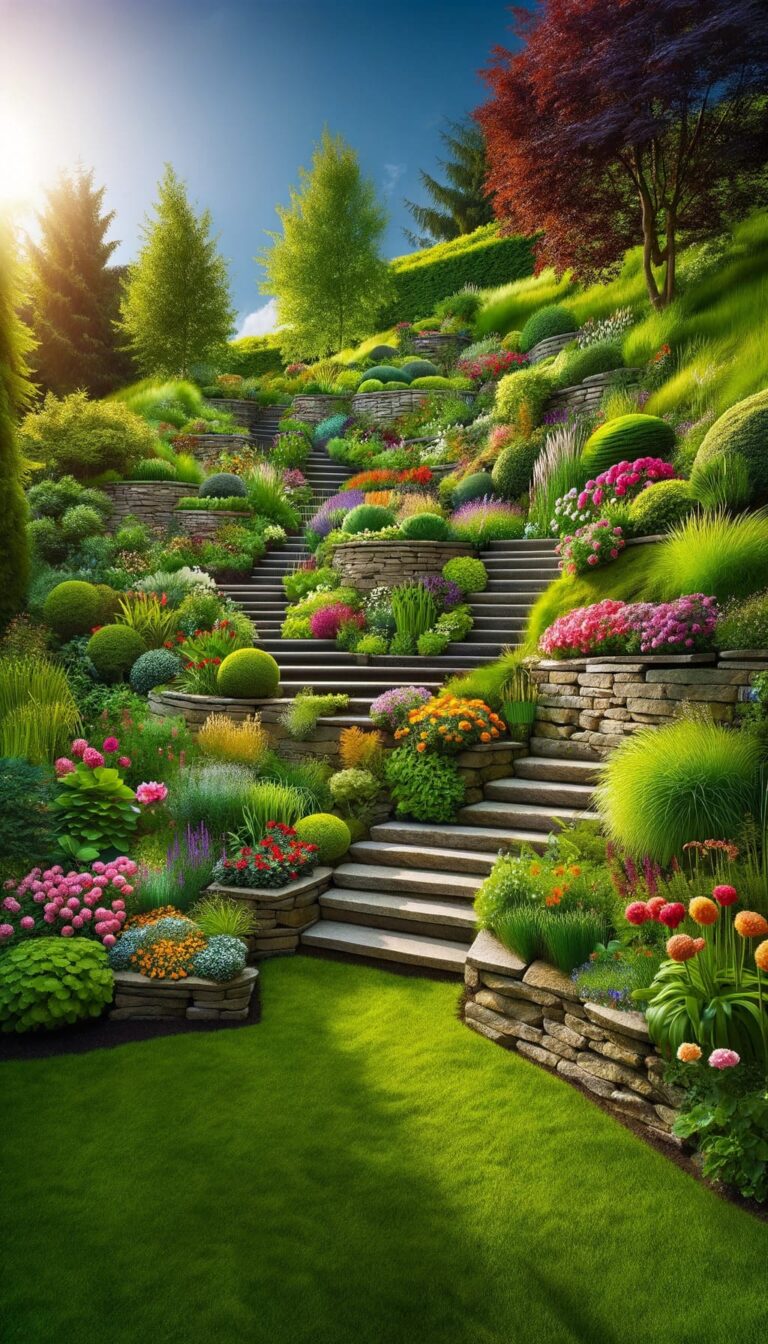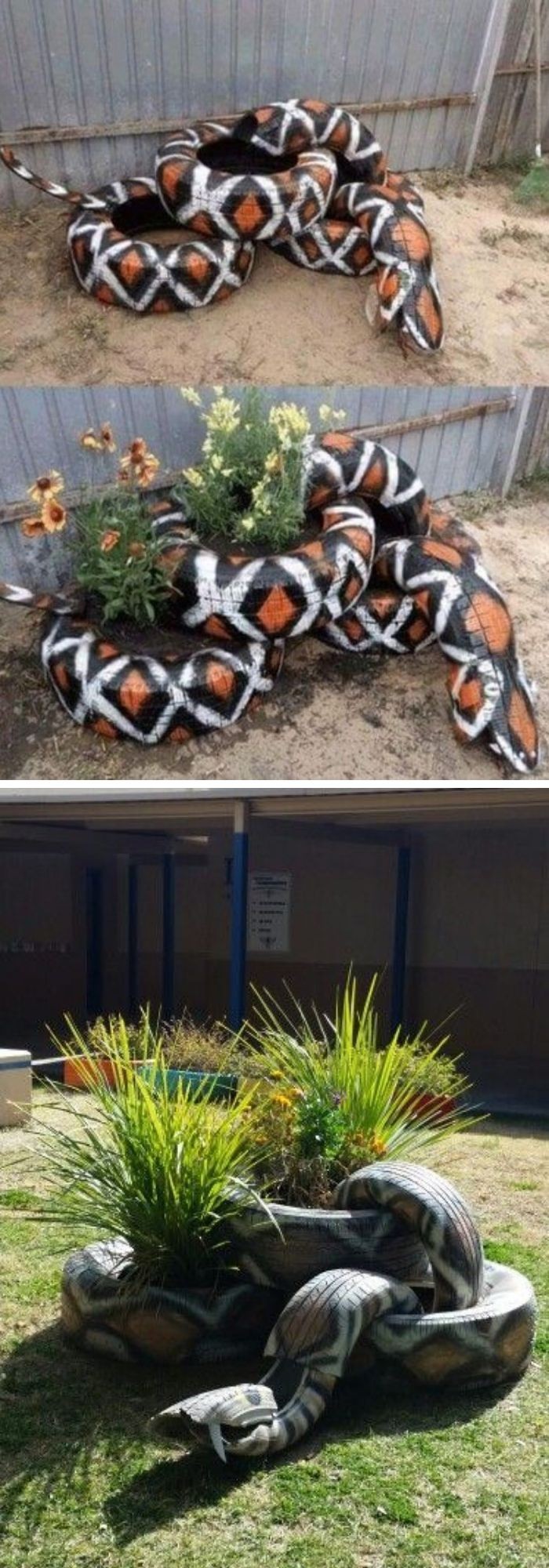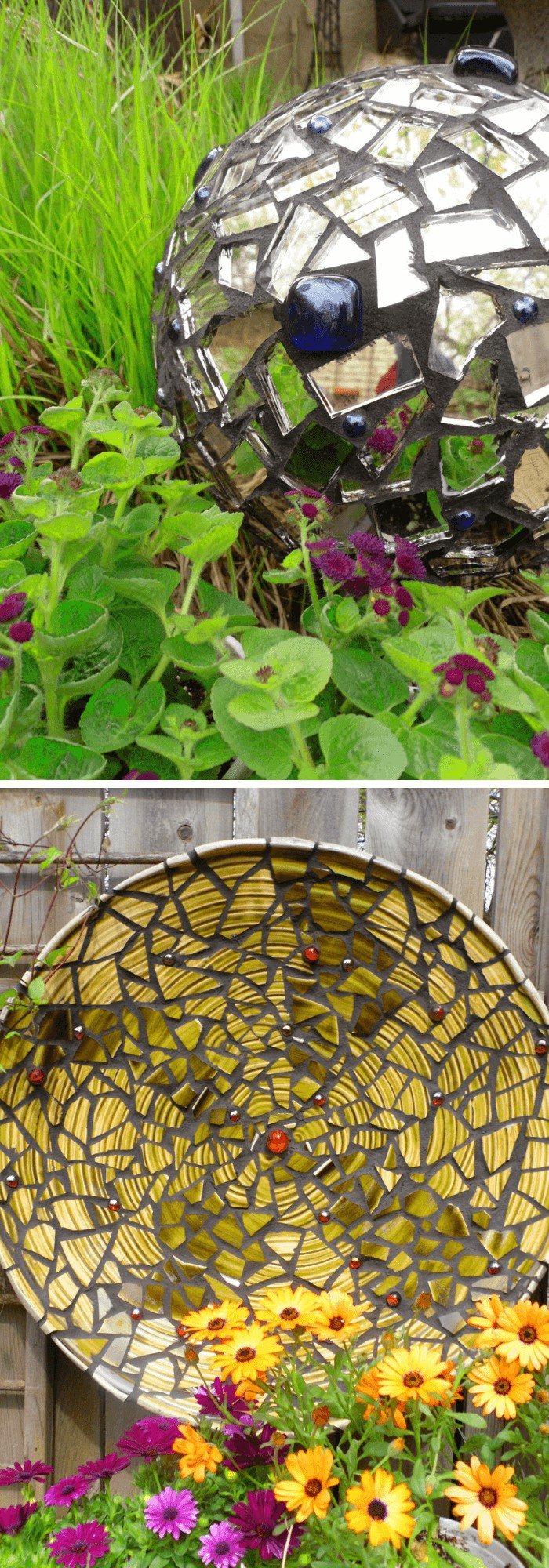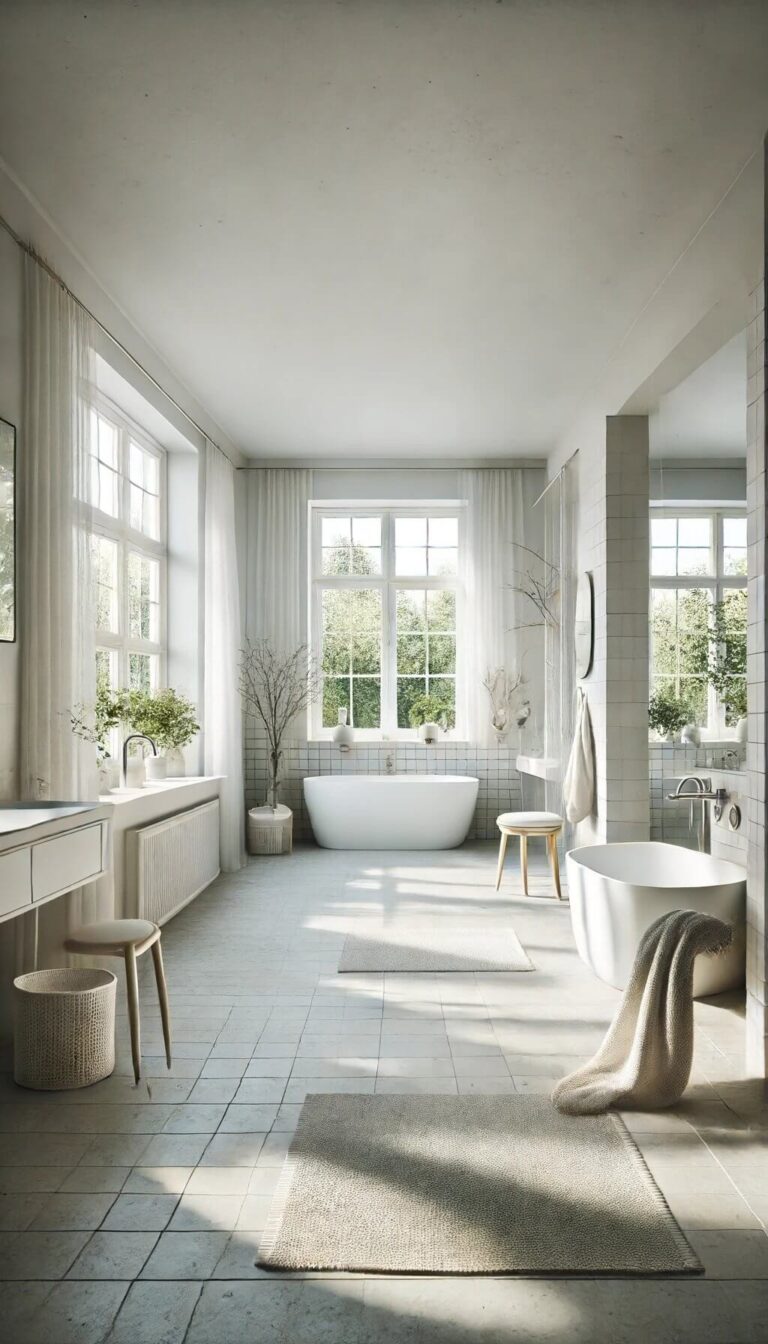12+ Colorful Indoor Succulent Garden Ideas For Your Home
If you’re seeking a way to brighten up your living space without the hassle of high-maintenance plants, consider creating an indoor succulent garden. Succulents have gained immense popularity for indoor gardening due to their unique beauty and incredible resilience. Not only do they add a touch of green to any room, but they also come with a host of benefits.
By choosing to create an indoor succulent garden, you’re not just enhancing the look of your home – you’re also purifying the air and embracing a low-maintenance gardening style that requires minimal upkeep. This approach to indoor gardening promises both aesthetic pleasure and practical benefits, making it an excellent choice for plant lovers of all levels.
With their ability to thrive in a variety of conditions, succulents can be arranged in creative containers, grouped by color or texture, and even used as decorative accents. In this article, we’ll explore the world of indoor succulent gardening, covering topics from selecting healthy succulents to designing innovative container arrangements.
Understanding Succulents
In arid climates and poor soil conditions, succulents have evolved to store water within their thick, fleshy parts. This remarkable ability allows them to thrive in environments where other plants would struggle. As a result, they’ve become a popular choice for indoor spaces, where they can effortlessly flourish with minimal watering and care.
Definition and Characteristics of Succulents
Succulents’ remarkable ability to store water sets them apart from other plants. Not only does this trait enable them to thrive in environments that would be challenging for many others, but it also adds to their visually striking features. The stems, leaves, and roots of succulents can expand with water, resulting in a unique, often breathtaking appearance.
This remarkable adaptability makes succulents an excellent choice for indoor gardening, particularly for those with busy schedules who may not have the time or resources to devote to plant care.
Common Types of Succulents Suitable for Indoor Gardens
Indoor succulents have gained immense popularity due to their adaptability and diverse characteristics. Each species offers a unique set of benefits and visual appeal that can enhance your home garden. Here’s an overview of some popular succulent types and their requirements: Aloe Vera thrives under bright, indirect light and requires low watering (every 3 weeks). Its medicinal properties make it a valuable addition to any indoor space.
Echeveria excels with full sun to partial shade and moderate watering (every 2 weeks). Its striking rosette shape and vibrant colors bring a touch of elegance to any room. The Zebra Plant stands out for its horizontal stripes on the leaves, offering a one-of-a-kind pattern. It prefers bright, indirect light and moderate watering (every 2 weeks). Jade Plant is a miniature tree-like succulent often associated with good luck.
It tolerates full sun to partial shade and requires low watering (every 3 weeks). Its aesthetic appeal and symbolic significance make it a popular choice for indoor gardening enthusiasts. The Christmas Cactus breaks the mold of traditional succulents by blooming seasonally, bringing color and joy during the winter months. It prefers bright, indirect light and moderate watering (every 2 weeks during growth).
Choosing succulents for your indoor garden means embracing plants that are not only easy to care for but also diverse in their appearance, benefits, and adaptability. Whether you’re drawn to the healing properties of Aloe Vera, the visual appeal of Echeveria, the unique patterns of Zebra Plant, the luck-associated Jade Plant, or the festive Christmas Cactus, there’s a succulent to match every preference and indoor gardening need.
Selecting Your Succulents
When selecting succulents for your indoor garden, it’s crucial to consider more than just aesthetics. To ensure the long-term health and success of your plants, it’s essential to choose succulents that are free from defects or diseases. Additionally, considering a variety of succulent types based on factors like color, texture, and size can greatly enhance the visual appeal of your space, making for a unique and captivating indoor garden.
Tips for Choosing Healthy Succulents for Indoor Gardening
When selecting succulents, it’s crucial to prioritize plants exhibiting robust signs of health. Look for leaves that are firm and plump, as this indicates effective water storage and overall wellness. On the other hand, avoid succulents with wilted, discolored, or damaged leaves, which may signal neglect or disease. Inspect the roots if possible; healthy roots should appear white or light tan in color and spread out evenly, indicating ample room for growth and a lack of root-bound constraints.
Additionally, pay attention to the succulent’s vibrant coloring, which should be consistent with its species’ natural hue. While minor color variations are acceptable, especially among varieties that change color with sunlight exposure, extreme discoloration may signify stress. Finally, choose succulents displaying new growth, a clear indication of active growth and proper care.
Creative Container Ideas
When it comes to succulents, the right container is just as vital as selecting the plants themselves. The vessel you choose can greatly impact the health of your succulents, not to mention their visual appeal within your indoor garden. A well-suited container can make all the difference in bringing out the best in your succulent collection, making it a crucial consideration in your gardening journey.
To help you navigate this important decision, we’ll delve into some key factors to consider when selecting containers and provide inspiration for creating unique and captivating succulent displays.
Guidelines for Selecting the Right Containers
When choosing the right container for your succulents, it’s essential to consider three crucial aspects: drainage, size, and material. A well-designed pot should facilitate healthy growth by allowing excess water to escape, preventing root rot and promoting even soil drying.
Drainage is critical, as succulents thrive in environments where moisture can evaporate freely. Look for containers with pre-drilled holes or consider adding your own to ensure proper water evacuation.
This simple yet vital consideration will help prevent the buildup of excess water that can harm your plants.
Next, consider the size of the container relative to your succulent’s growth needs. A pot that is too large can become a repository for moisture, leading to potential issues, while one that is too small may restrict growth and impede root development. By selecting a container that matches your succulent’s size, you’ll create an environment conducive to healthy growth.
Finally, the material of the container plays a significant role in maintaining optimal conditions for your succulents. Porous materials like terracotta and ceramic allow soil to dry more evenly, while plastic and glass containers can retain moisture, making them suitable for arid environments. However, it’s crucial to monitor watering carefully to avoid overhydration.
Innovative Container Suggestions
To elevate your indoor gardening game, consider these innovative container ideas:
Terrariums offer a controlled environment and high humidity that’s perfect for small succulents or air plants. This miniature greenhouse effect can be a stunning showcase for delicate specimens.
Hanging planters provide a space-saving solution with an added aesthetic appeal. Trailing succulents like String of Pearls or Burro’s Tail thrive in these vertical containers, adding visual interest to any room.
Repurposed items such as mugs, old books, or even computer casings can be transformed into one-of-a-kind planters for succulents. This eco-friendly and personalized approach adds a unique touch to your decor. Just remember to ensure proper drainage or layer with gravel before adding soil and plants.
Soil and Planting Tips
For an indoor succulent garden to thrive, it’s essential to lay a solid foundation from the outset. This involves selecting the perfect soil mix and mastering the art of planting succulents in containers. In this regard, the right soil mix plays a vital role in supporting your succulents’ growth and well-being. Let’s explore why this is so crucial and provide a straightforward guide on how to plant succulents successfully.
Importance of the Right Soil Mix for Succulents
Succulent enthusiasts often overlook the crucial role that well-draining soil plays in their plants’ health and longevity. In their natural habitats, succulents thrive in arid environments where water flows quickly through the soil, preventing moisture from accumulating around the roots. To replicate this environment successfully, it’s essential to use a soil mix that strikes a balance between soil, sand, and perlite or pumice.
This trifecta of components enables water to flow freely, reducing the risk of root rot that can occur when excess moisture lingers. By using the correct soil mix, you’re not only promoting healthy growth but also safeguarding against the most common affliction affecting succulents: overwatering.
Step-by-Step Guide on How to Plant Succulents in Containers
Succulents are easy to care for when planted correctly, so let’s dive into the process of planting them in containers.
First, choose a container that has at least one drainage hole. You want to make sure your succulent doesn’t drown! When it comes to size and material, refer back to the guidelines provided earlier.
Next, prepare your soil mix by combining two parts potting soil, one part coarse sand, and one part perlite or pumice.
This unique blend creates a fast-draining environment that succulents adore.
Fill the container with your soil mix, leaving about an inch of space at the top to prevent messiness when watering.
Now it’s time to plant your succulent! Start by making a hole in the center of the soil large enough for the roots. Gently remove your succulent from its nursery pot and loosen the roots to encourage growth. Place the succulent in the hole, then firm the soil around it to provide support.
After planting, give your succulent a light watering to settle the soil around its roots. Going forward, water only when the soil is completely dry, as succulents are accustomed to less water than more. In fact, they prefer it that way!
Finally, place your newly potted succulent in an area with plenty of indirect sunlight. They thrive in bright light conditions.
By following these simple steps, you can plant and nurture succulents that not only survive but truly flourish indoors.
Remember, the key to succulent care is creating the right environment for them to grow on their own – it’s all about less frequent attention and more precise setup.
Arranging Your Indoor Succulent Garden
When it comes to crafting an visually appealing indoor succulent garden, the art of arrangement is just as crucial as the selection of plants. By considering key design principles and experimenting with various setup concepts, you can curate a succulent display that not only delights the eye but also fosters harmony within its surroundings.
Principles of Design and Arrangement
As you curate your indoor succulent garden, consider the trifecta of design elements: heights, colors, and textures. These aspects can harmonize to create a visually appealing arrangement.
Heights bring depth and intrigue. Strategically place taller succulents like Aloe or Snake Plants as anchor points, then surround them with shorter, spreading types like Sedum to add visual interest.
Colors can be a powerful unifying force.
Succulents come in an array of hues – from the calming tones of green and blue to the bold statements of pink and purple. Arrange your plants so that their colors work together in harmony, creating a cohesive look that’s pleasing to the eye.
Textures offer yet another layer of visual complexity. Combine succulents with dramatic, spiky leaves like Haworthia with those featuring soft, rounded leaves like Echeveria for a striking contrast that adds depth and dimension.
Ideas for Different Setups
When it comes to arranging your succulents, you have three primary options: showcasing a single species, creating mixed arrangements, or designing thematic gardens. Each approach offers a unique way to highlight the beauty of your plants and create a personalized space.
The Single-Species Focus involves dedicating an entire container to one type of succulent, allowing its distinct characteristics to shine.
This setup is ideal for showcasing rare or striking species that deserve special attention.
For those who enjoy variety and experimentation, Mixed Arrangements provide a way to combine different succulents in a single pot, creating a miniature landscape. This approach allows you to test out different plant combinations and find the perfect balance for your space.
If you want to add an extra layer of personality to your garden, Thematic Gardens are a great option.
You can create a desert-inspired arrangement, a color-coordinated display, or even mimic a natural habitat. This setup provides a way to tell a story or evoke a specific mood through your succulent arrangement.
Light and Temperature Requirements
Succulent cultivation relies heavily on replicating the conditions found in their natural habitats, where they thrive under high-light conditions and specific temperature ranges. To ensure optimal health and growth, it’s essential to comprehend the role of light in succulent care, as well as identify ideal indoor locations that balance light and temperature requirements.
The Role of Light in Succulent Health and Growth
Succulents thrive in the presence of light, which fuels photosynthesis – the process of converting sunlight into energy. When light is scarce, these plants can become elongated and lose their signature vibrant colors, a phenomenon known as etiolation. To keep your succulents thriving and retaining their characteristic compact shape and rich coloration, it’s crucial to provide them with sufficient illumination.
Ideal Indoor Locations Based on Light and Temperature Conditions
When it comes to placing succulents indoors, finding the right balance between light exposure and temperature is crucial. To achieve optimal growing conditions, consider the following guidelines for selecting the best locations: Succulents that require bright, direct light thrive in south-facing windows where they receive consistent warmth. These plants, such as Echeveria and Sedum, will flourish in this environment.
East- or west-facing windows provide moderate, indirect light – perfect for succulents that benefit from a mix of sunlight and shade. Varieties like Haworthia or Aloe do well in these conditions, where they can enjoy brief periods of direct sun followed by shaded intervals. North-facing windows typically offer low, indirect light, making them suitable for plants that prefer milder temperatures and limited sunlight.
If your succulents don’t receive sufficient natural light from north-facing windows, consider supplementing with artificial grow lights to promote healthy growth. By placing your succulents in areas that mimic their natural habitats as closely as possible, you’ll encourage robust growth and flowering. Monitor your plants’ responses and adjust their locations accordingly to ensure they’re receiving the right amount of light and temperature.
Watering and Maintenance
Beyond simply positioning your indoor succulents in a spot with sufficient sunlight, effective care requires attention to hydration and regular upkeep. To keep these plants thriving, it’s essential to adopt the right approach to watering and perform routine tasks like pruning and repotting with precision.
Watering Techniques and Schedules for Indoor Succulents
When it comes to watering succulents, it’s crucial to understand their unique requirements. Unlike other plants, succulents thrive in dry conditions and require a specific watering schedule that mimics their natural environment. To achieve this, aim to thoroughly soak the soil, allowing water to flow out of the drainage holes before letting it dry out completely between waterings.
While it may seem counterintuitive, succulents need more water during their active growing season (typically spring and summer) to support new growth. Conversely, reduce watering frequency during their dormant period (fall and winter). A simple way to gauge the right amount of moisture is to check that the top inch of soil is dry before rewatering.
Here’s a straightforward guide to follow:
* Spring/Summer: Water every 1-2 weeks, taking into account their increased water requirements during this period.* Fall/Winter: Water every 3-4 weeks, as succulents require less moisture during their dormant phase. With this simple approach, you’ll be well on your way to becoming a succulent care expert!
Common Maintenance Tasks
Succulent care extends beyond watering. Regular pruning and repotting tasks are essential for maintaining their overall health and appearance.
Pruning is crucial for removing any dead or dying leaves that can hinder the plant’s growth. Use clean, sharp scissors or pruning shears to gently remove these unwanted parts without causing harm to the succulent. This simple task encourages healthier growth and helps maintain the plant’s natural shape.
Repotting is another critical step in succulent care. Every 2-3 years or when the plant outgrows its container, it’s time to refresh the soil and inspect the root system for any signs of stress or decay. When choosing a new pot, opt for one that is slightly larger than the previous one to provide room for further growth.
Task Purpose Frequency
Pruning Remove dead leaves, promote health As needed
Repotting Refresh soil, encourage growth Every 2-3 years or when outgrown
Troubleshooting Common Issues
To ensure the longevity of your indoor succulent garden, it’s essential to be aware of potential pitfalls. Despite proper care, succulents may still encounter issues such as pest infestations, diseases, and overwatering. By recognizing these common problems early on, you can take prompt action to resolve them, ultimately maintaining a thriving and healthy collection of plants.
Identifying and Addressing Common Problems
Succulents, despite their hardiness, are not immune to common issues that can arise. When it comes to tackling these problems, it’s essential to be proactive and address the root cause (pun intended). Here’s a breakdown of some of the most common culprits:
Pests: Keep an eye out for tiny but troublesome pests like mealybugs, spider mites, and gnats. If left unchecked, these pesky critters can wreak havoc on your succulent’s health.
Diseases: Fungal infections often manifest as unsightly spots on leaves or stem rot. To combat this issue, be sure to remove affected areas and improve air circulation.
Overwatering: This is perhaps the most common mistake succulent enthusiasts make. Signs of overwatering include yellowing leaves, mushy stems or leaves, and root rot. To rectify the situation, allow the soil to dry completely before repotting if necessary.
Tips for Keeping Your Succulents Healthy and Thriving Indoors
To maintain the health and vibrancy of your succulent collection, heed these essential guidelines. By adopting a few simple habits, you can minimize common pitfalls and keep your plants thriving. Start by mastering the art of watering. Before adding more moisture to the soil, check its current level to avoid overwatering or underwatering. Additionally, ensure that pots have sufficient drainage holes to prevent waterlogged soil. Next, optimize your succulents’ light exposure.
While they require bright, indirect sunlight, it’s crucial to rotate them regularly to guarantee even coverage. This will help prevent any one spot from becoming too hot or receiving inadequate illumination. Regular visual inspections are also vital. Keep a watchful eye out for early signs of pests or diseases, as prompt detection enables more effective treatment and minimizes damage.
When selecting soil for your succulents, prioritize well-draining mixes specifically designed for these types of plants. This will help prevent waterlogged soil and root rot. Finally, be mindful of overcrowding. Give each plant ample space to allow for good airflow around its leaves, reducing the risk of disease transmission between plants.
Inspirational Indoor Succulent Garden Displays
Indoor succulent gardens offer a blank canvas for creativity and personal expression, allowing homeowners to infuse their living space with a touch of nature’s serenity. With the freedom to create desktop masterpieces, visually striking wall displays, or elegant centerpieces, the versatility of succulents makes it easy to bring the outdoors in.
Let’s embark on a journey of creative exploration and learn from those who’ve successfully transformed their spaces with these low-maintenance yet high-impact plants.
Showcase of Creative Indoor Succulent Garden Ideas
When it comes to showcasing succulents indoors, versatility is key. These hardy plants can thrive in a variety of display settings, making them perfect for indoor gardening enthusiasts. Here are some creative ways to bring your succulent collection to life:
Imagine transforming your desktop into a miniature oasis by placing a small tray or shallow dish on it.
Fill the container with a mix of succulents, such as Echeveria and Sedum, to create a tiny garden that will brighten up your workspace.
Alternatively, use vertical planters or frames to add a touch of greenery to any room without taking up valuable floor space. Sempervivum, Jade plants, and String of Pearls make for a stunning wall garden combination.
For a statement piece, combine succulents with candles, stones, or wood in a broad, shallow container.
This eye-catching centerpiece arrangement is perfect for your dining table or coffee table, featuring Aloe Vera, Zebra Plant, and Kalanchoe.
Here’s a breakdown of each display type:
Display TypeContainer IdeasSucculent SuggestionsDesktop GardensTrays, shallow dishesEcheveria, Haworthia, SedumWall GardensVertical planters, framesSempervivum, Jade plant, String of PearlsCenterpiece ArrangementsBroad, shallow containersAloe Vera, Zebra Plant, Kalanchoe
Succulent dresser

Succulents in tin can planters
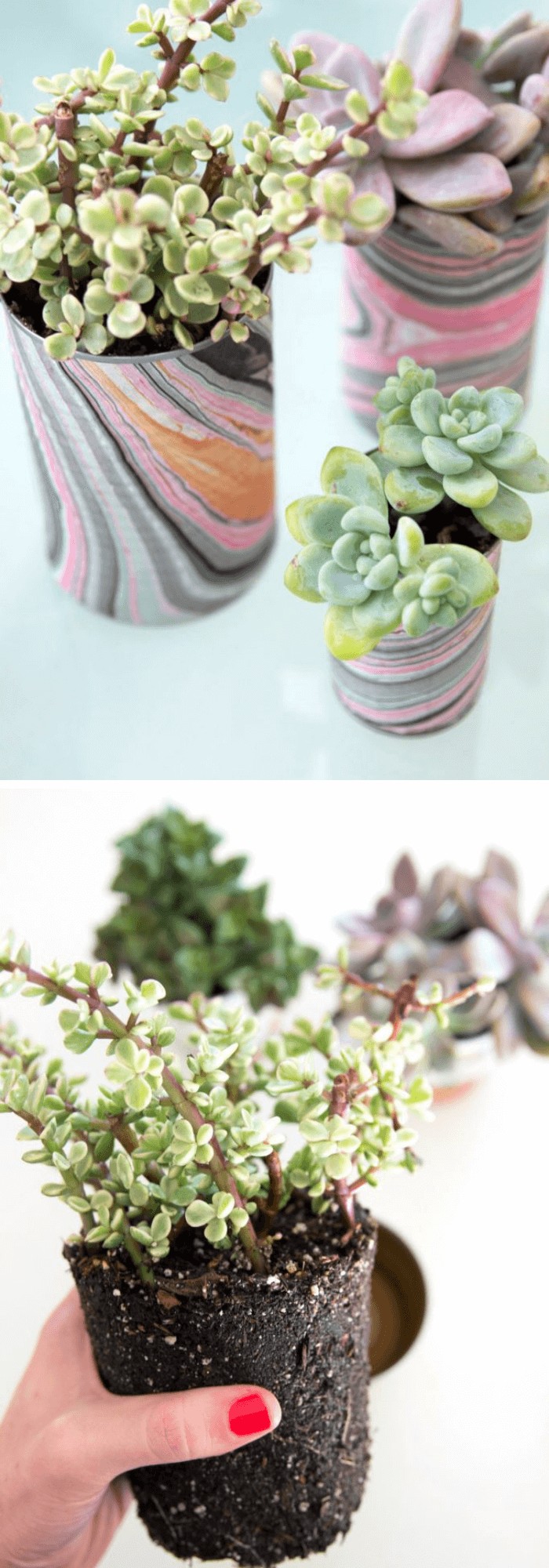
DIY mini gold splatter succulent planters
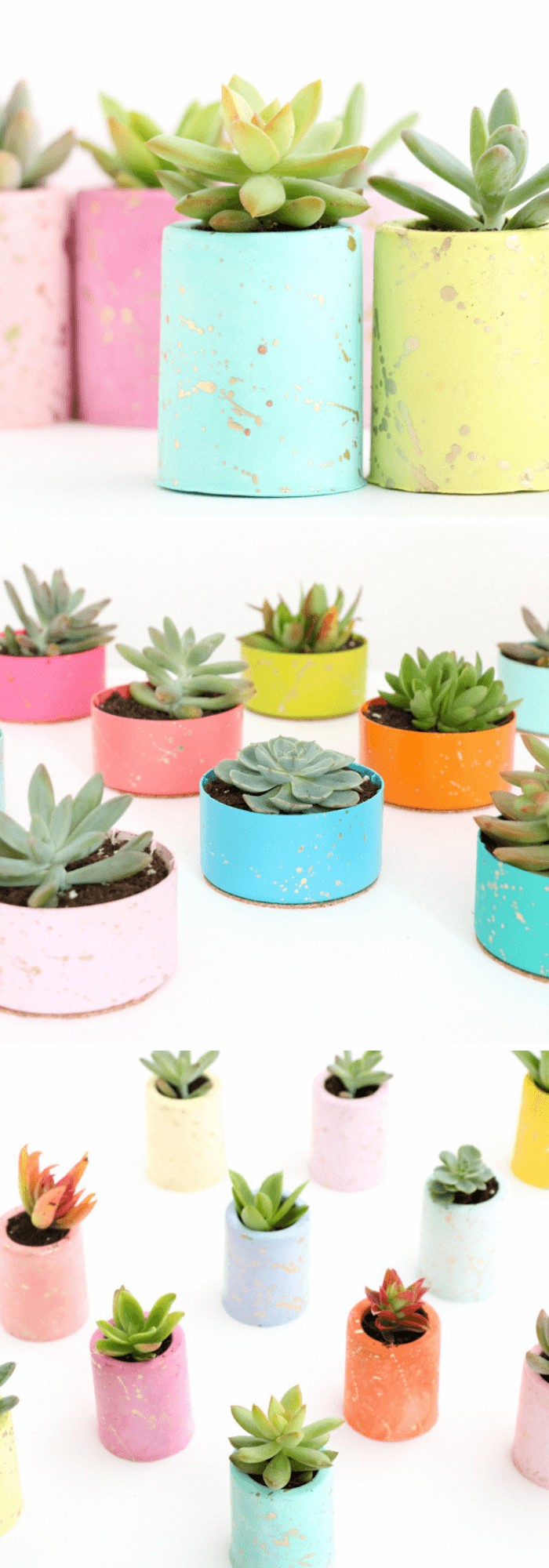
DIY Modern Indoor Planter
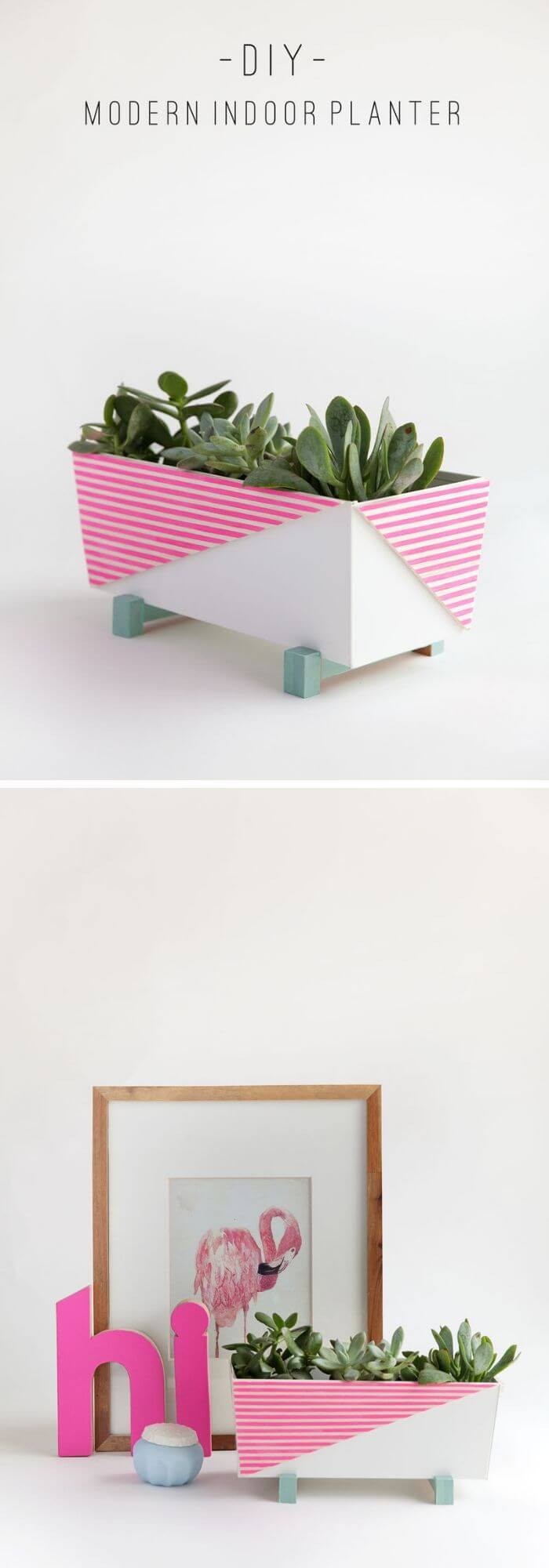
Berry basket succulent planter
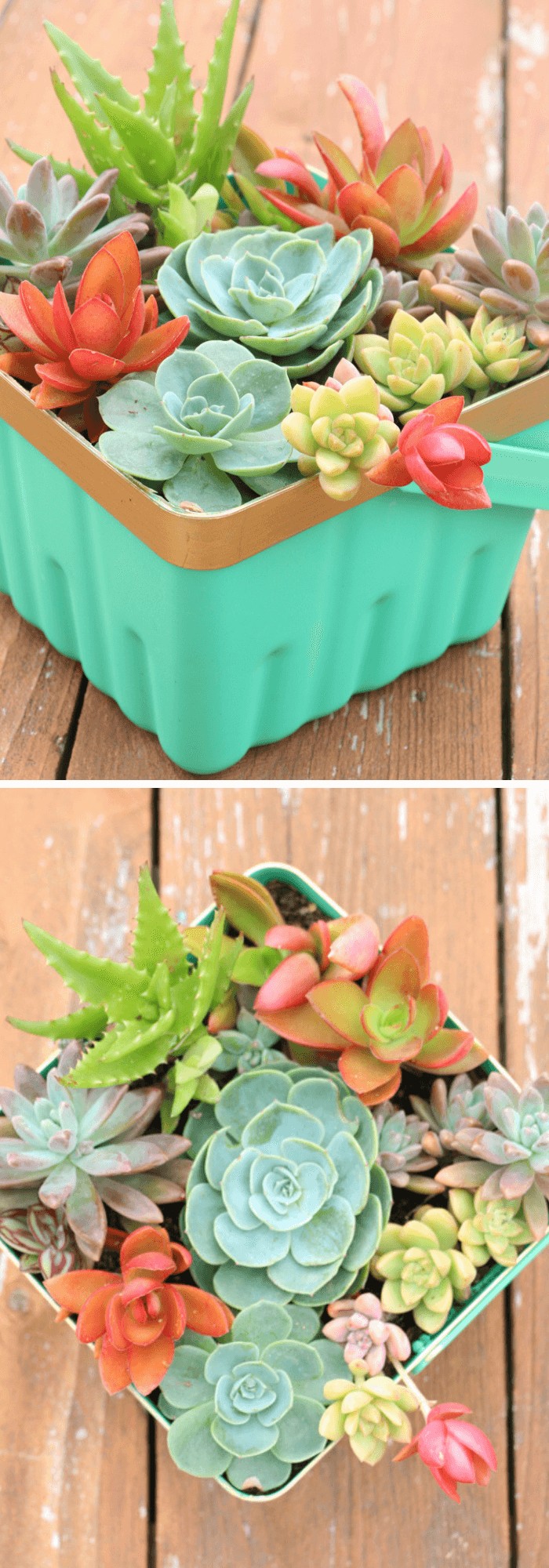
Cute plant pot from an Easter bowl
Cigar Box Planter
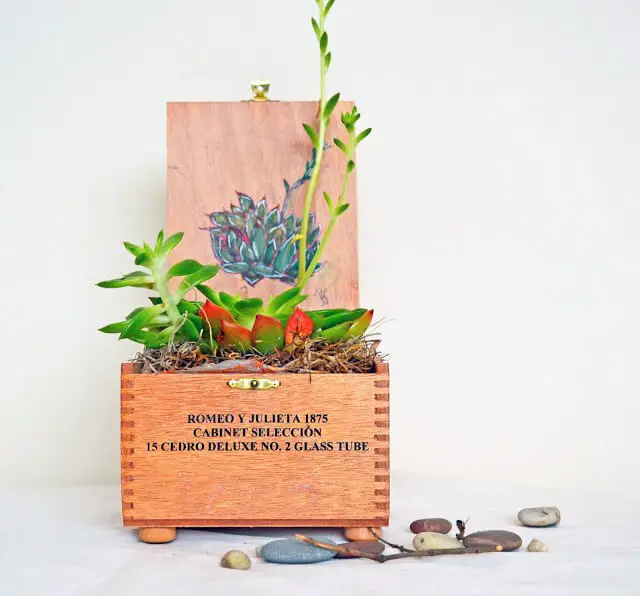
Succulents Log Centerpiece
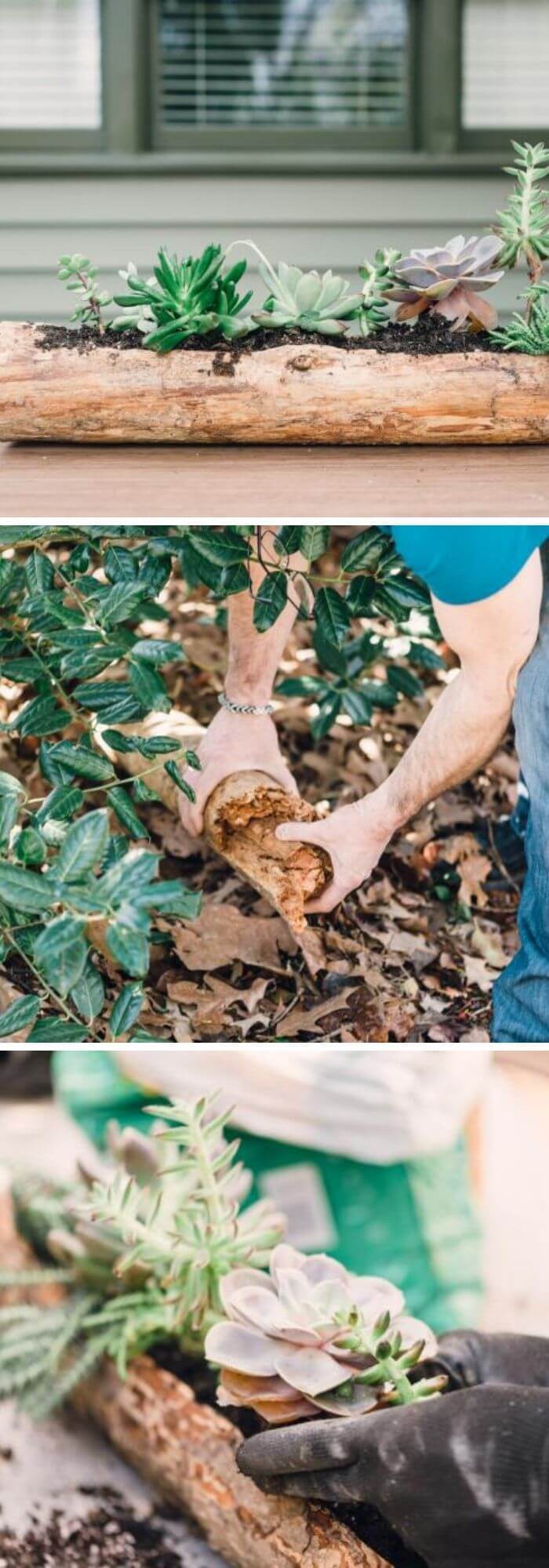
Succulent Dish Garden
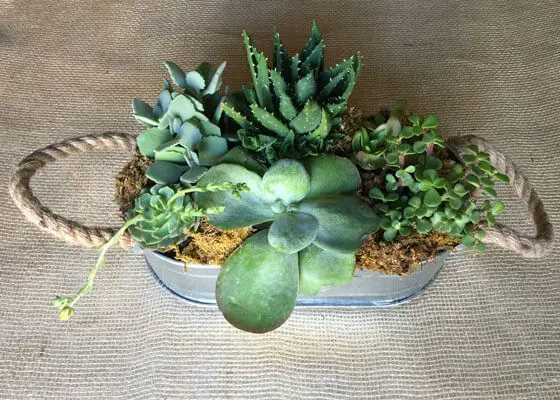
DIY Aztec Print Succulent Pots

DIY Succulent Pumpkin
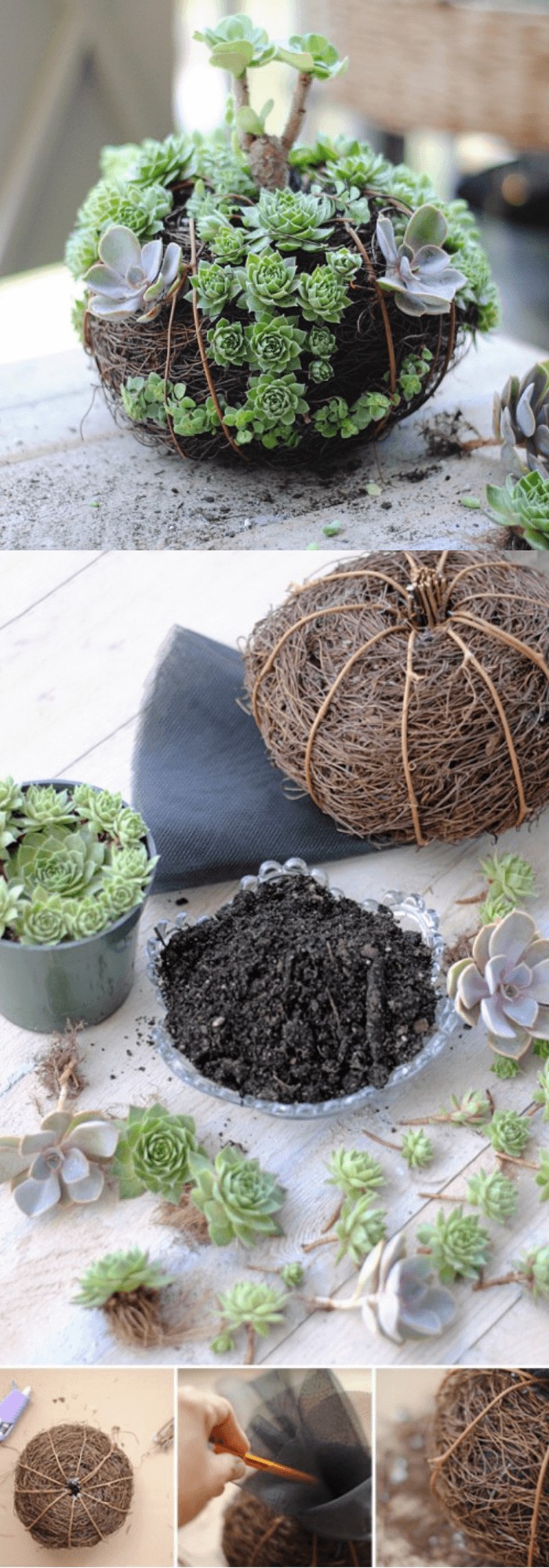
DIY Block Succulent Garden
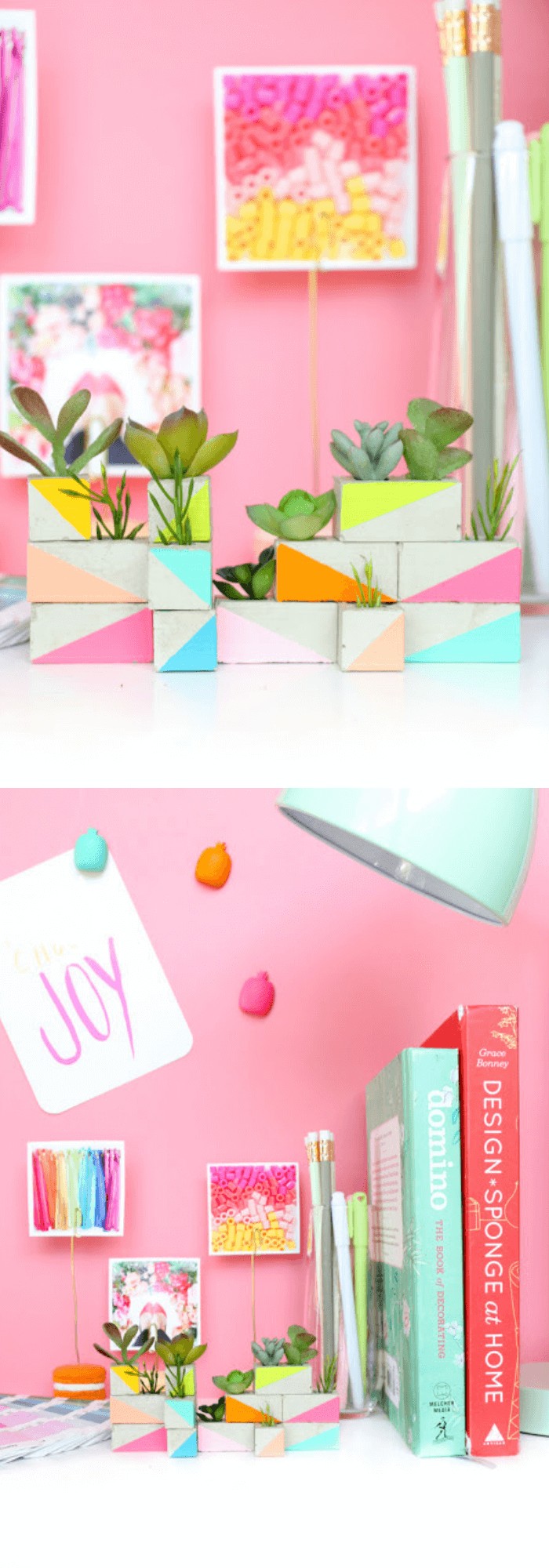
Conclusion
Indoor succulent gardens offer a unique combination of benefits and joys that can enhance the aesthetic appeal of your living spaces while also providing practical advantages. These resilient plants not only serve as a reminder of nature’s beauty but also offer a therapeutic hobby that can improve well-being. As you create an indoor succulent garden, you’ll discover the versatility of these plants and the endless possibilities for designing a space that reflects your personal style.
From arranging a serene desktop display to crafting a vibrant wall feature or elegant centerpiece, every element is an opportunity to express your creativity. The journey of indoor succulent gardening promises growth, fun, and a sense of accomplishment. As you tend to your plants, remember that even small efforts can contribute to creating a greener, more peaceful, and joyful space in your home.
FAQ: Indoor Succulent Garden Ideas
How often should I water my indoor succulents?
When it comes to watering indoor succulents, several factors come into play, including climate, season, and the specific needs of your succulent. While there is no one-size-fits-all answer, a good rule of thumb is to water only when the soil is completely dry. This can be every 2-4 weeks or more depending on your unique situation. A crucial step before watering is to check the soil’s moisture level, as overwatering can have devastating consequences like root rot.
Can indoor succulents survive in low light conditions?
While most succulents appreciate bright, indirect sunlight, many species can adapt to low-light conditions for a short time. Nevertheless, their growth may not be as robust in less than ideal lighting. For spaces with limited natural light, consider supplementing with a grow light to ensure your succulent friends receive the necessary illumination for optimal health and development.
Do I need special soil for my indoor succulent garden?
When it comes to growing succulents, one crucial aspect to consider is the type of soil you use. Succulents thrive in well-draining soil that prevents water from collecting around the roots, which can lead to root rot. A cactus or succulent potting mix is specifically designed with this in mind, providing quick drainage. Alternatively, you can create your own mix by blending potting soil with sand and either perlite or pumice, both of which are excellent additives for improving soil drainage.
What are some creative container ideas for indoor succulents?
When it comes to housing indoor succulents, versatility is key. These hardy plants can thrive in a wide range of containers, from classic planters and glass terrariums to more unconventional vessels like ceramic mugs, vintage teacups, and even repurposed items such as old books or wooden crates. The crucial factor to consider when selecting a container is ensuring it has sufficient drainage holes to allow excess water to drain freely, preventing waterlogged soil that can harm your succulent.
How can I propagate my indoor succulents to create more plants?
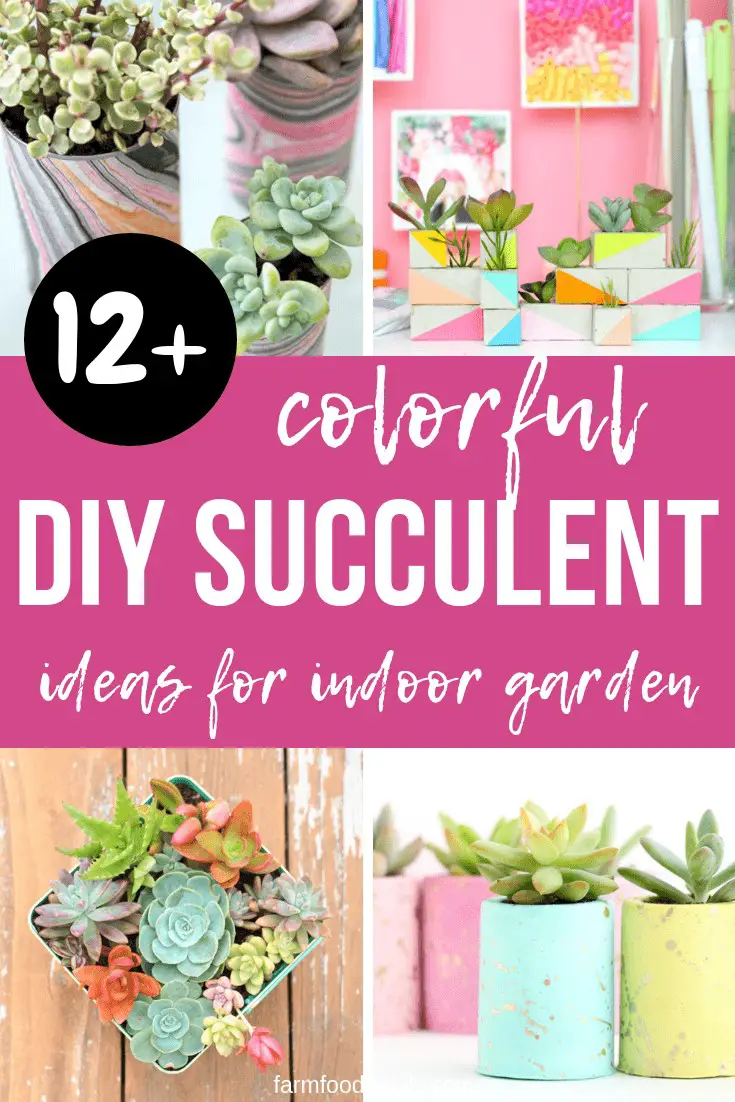
For succulent enthusiasts, propagation is a straightforward process that requires minimal equipment and expertise. One popular method involves leveraging leaf cuttings or offsets (smaller versions of the mother plant) to multiply your succulent collection. When working with leaves, begin by carefully twisting and pulling the leaf from the stem, ensuring a clean separation.
Allow the newly detached leaf to dry out for several days until it develops a callus, which serves as a natural barrier against rot and infection. Once the callus has formed, gently place the leaf on top of a well-draining succulent soil mixture, taking care not to compact the soil excessively. Under proper growing conditions, the leaf should soon develop roots and a new plant, effectively propagating itself.
For those who prefer to work with offsets, simply dig them up from their mother plant and replant them in their own container filled with succulent-specific soil. With a little patience and TLC, your new offsets will quickly establish themselves and start thriving.

